With the recent announcement of the third plastic kit for the Sd.Kfz 250 Alte, there are now seven (count ‘em!) variants of the iconic little German half-track that you can build and field in Bolt Action, meaning there really is one for every situation you could possibly imagine! We examined the original boxed set in this article a little while ago, so let’s take a look at the variants that be made from the two more recent boxed sets, and make a few tactical suggestions about how you can go about fielding them in your games.
Sd.Kfz 250/3 & 250/10
We’ll start with the 250/3 and 250/10, available in this boxed set. The 250/3 is one of the best-named vehicles of all time in my opinion – the Leichter Funkpanzerwagen (light radio armoured car) – and also one of the most famously photographed of the 250 series. A mobile, protected command vehicle mounting a map table and multiple radio sets in the crew compartment, with a distinctive wire ‘bedframe’ radio aerial mounted atop the hull, the 250/3 served on all fronts throughout the war, but was most famously the mount of choice for Feldmarschall Erwin Rommel during his timenin the Western Desert as he led the Afrika Korps.
Naturally, our kit includes a plastic Rommel figure (which would also look very nice on an infantry base in its own right) and appropriate transfers for his personal vehicle, known as Greif (griffon), as seen below. Whether or not you’re building Rommel’s Greif or a generic Sd.Kfz 250/3, the all-plastic kit eliminates the traditionally hellish procedure of assembling such large antennae in metal! On the tabletop, the 250/3 is ideal to represent a 250/1 with the Command Vehicle upgrade, as a low-cost leadership choice for an armoured platoon, or just as a really stylish ride for a senior officer.
From the same box comes the 250/10, another command variant, but one of a distinctly more combative bent. Mounting a PaK 36 light anti-tank gun (the ‘doorknocker’ of early-war fame) in place of the forward machine gun, the 250/10 was intended for use as a reconnaissance platoon leader’s vehicle, giving fast-moving scouting forces at least some anti-tank capability. While thoroughly obsolete by the mid-war against most modern armour, it did provide the ability to engage and suppress hardened targets while reinforcements moved up in support. Perfect for armies themed around fast-moving advance units on the leading edge of Blitzkrieg, the 250/10 is a great transport for an officer team (as intended), and can be used with a bit of crafty manoeuvering to work itself into position to fire off a cheeky shot from the light anti-tank gun into the vulnerable sides or rear of incautious enemy armour.
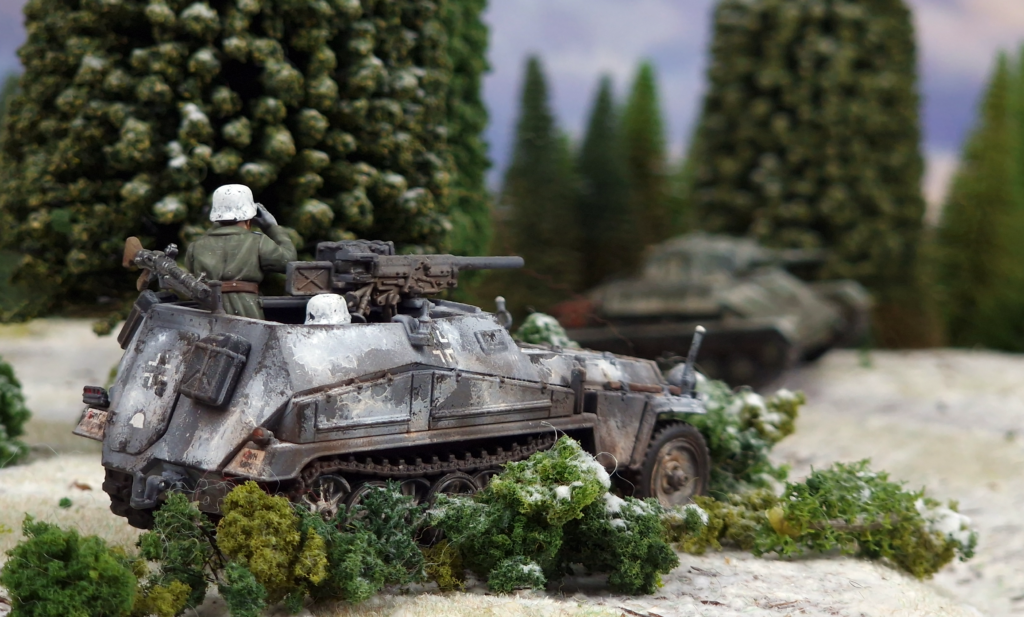
Sd.Kfz 250/4 & 250/7
Now, onto the newest stuff! The latest box includes options to build the 250/4 and the 250/7 variants. The 250/4 is an interesting beast, so we’ll start there. Conceived as a mobile light anti-aircraft vehicle that could keep up with the mobile Panzergrenadier formations, and mounting a pair of MG34 machine guns in a high-angle mount, the 250/4 never entered serial production, the rifle-calibre machine guns being ineffective against the increasingly well-armoured aircraft of the period, and its role was filled later by a series of vehicles armed with increasing numbers of 2cm autocannon. Nevertheless, it is a unique and frankly cool-looking vehicle, and we all know how effective a couple of medium machine guns on a mobile platform can be on the Bolt Action battlefield – while it may not see too much use in its original intended role, it’s a great option for anti-infantry work if you’ve got a spare vehicle slot!
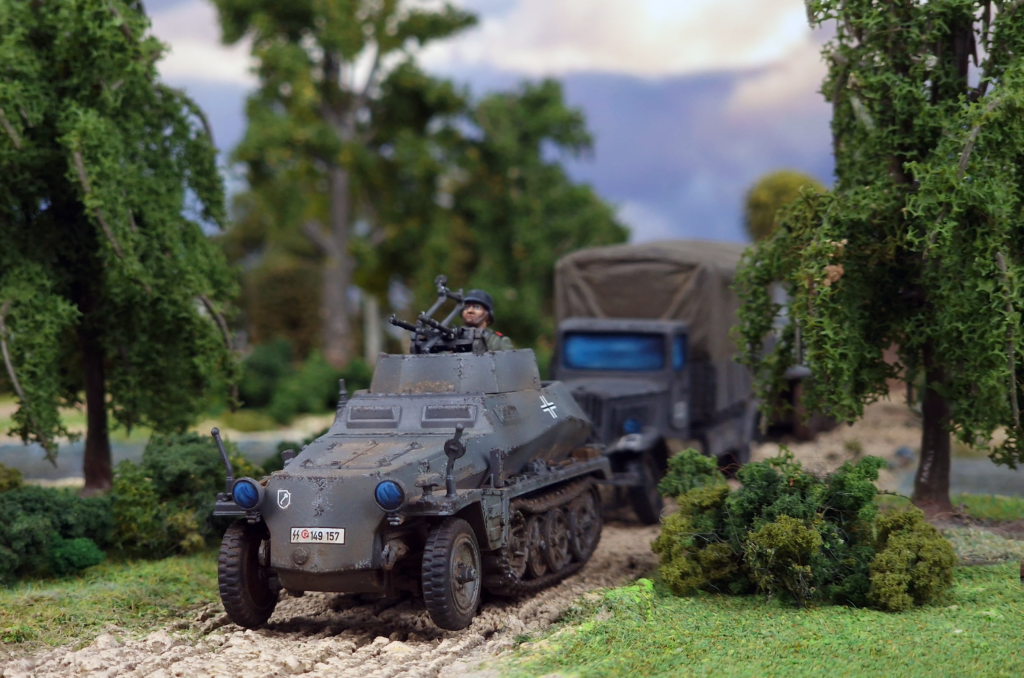
Sd.Kfz 250/7
Last off is the 250/7 mortar carrier. Mortars were a vastly important weapon of the Second World War, and although most are usually seen dismounted in games of Bolt Action, all major belligerents made good use of medium mortars mounted in half-tracks for greater mobility and tactical flexibility. Mounting the Wehrmacht‘s standard 81mm weapon in the open troop compartment of the 250 was an obvious choice, with the mortar carriers usually accompanied by another 250 (confusingly these would also be designated 250/7) configured to carry ammunition. With only a very little kitbashing, a 250/1 could easily be made to represent this Muntionsfahrzeug for those wishing to go for historical ‘completeness’. Without the benefit of a Spotter, the 250/7 isn’t quite as consistent as an infantry mortar on the table, but is equally destructive, allowing for even more high explosive death from above; all you need is that one six to hit…
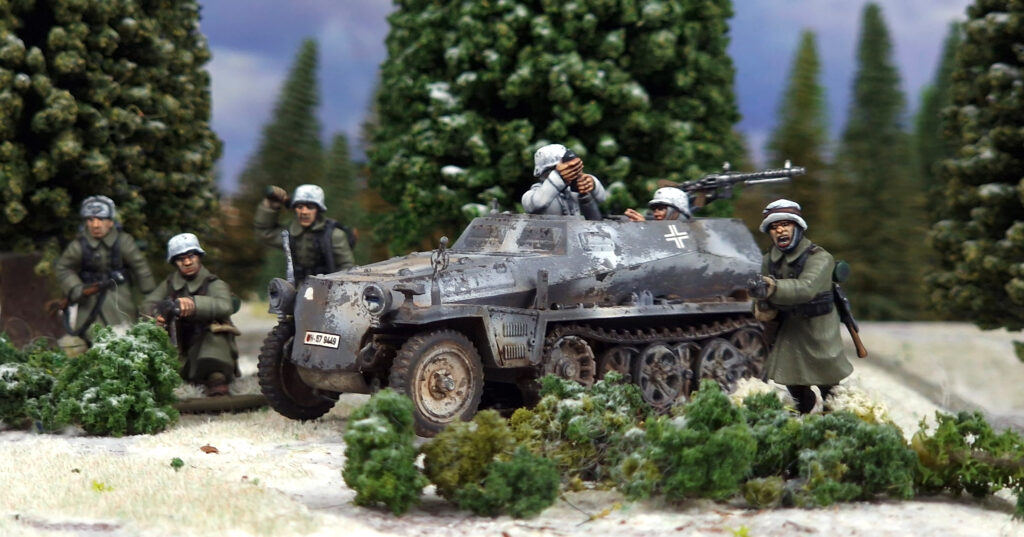
Remember that the contents of all three of the Sd.Kfz 250 (Alte) Half-Track boxes can also be made as the ‘standard’ 250/1 transport, should you require a less specialised option to move your smaller squads around the battlefield. They also include crew figures appropriate for both tropical and more frigid climates, with separate heads, allowing you to perfectly tailor your vehicles to your force whatever your preferred theatre of war – no more Afrika Korps gunners shivering incongruously in the Russian winter!
With this trio of kits for the Sd.Kfz 250 Alte now available, it’s the perfect time to add one or more to your force, or even get a brand new Panzergrenadier force together, whether for the Western Desert, Eastern Front, or the early-war campaigns of Blitzkrieg. Three half-tracks and a box of infantry is a perfect place to start – now get ready to move out!
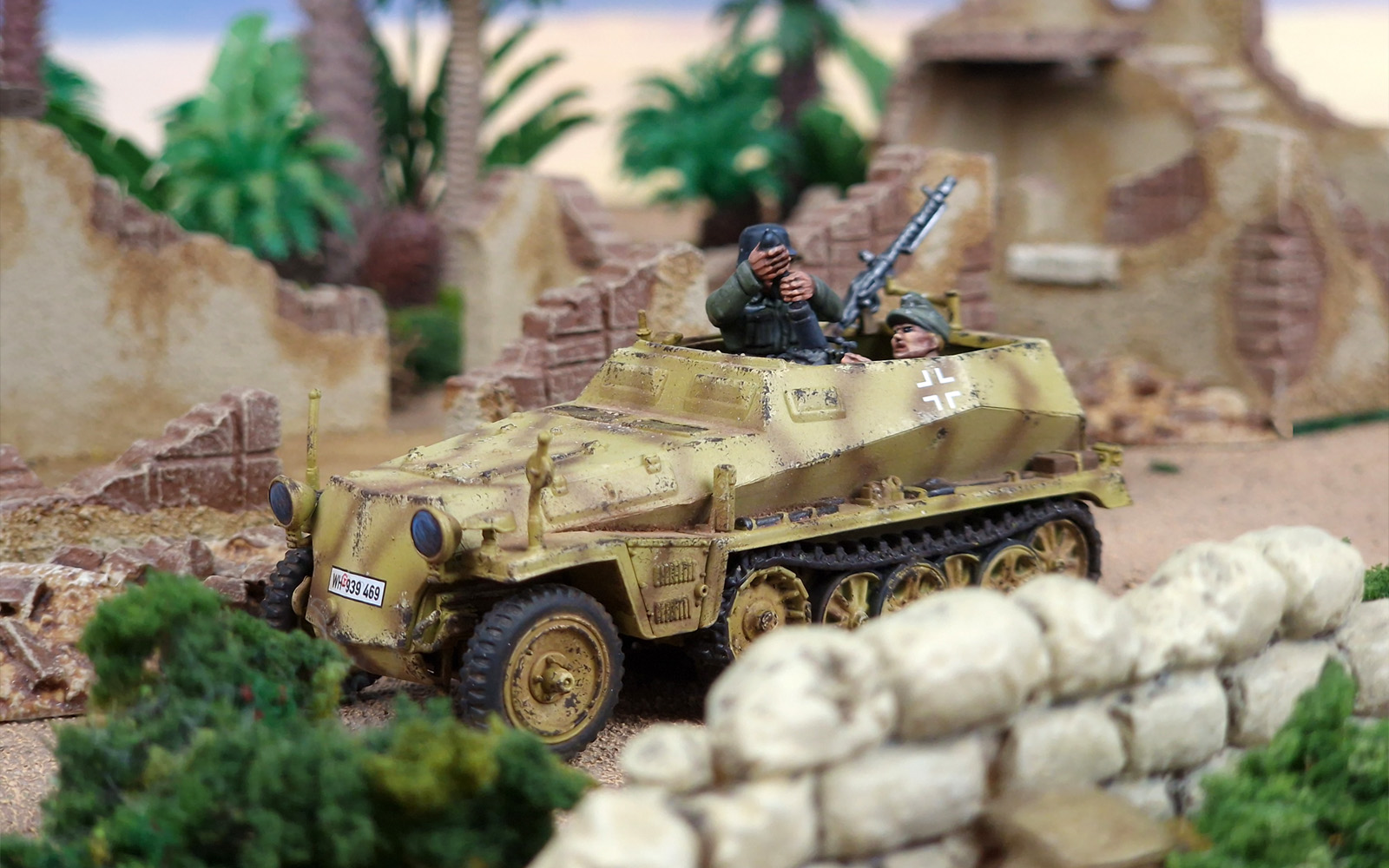
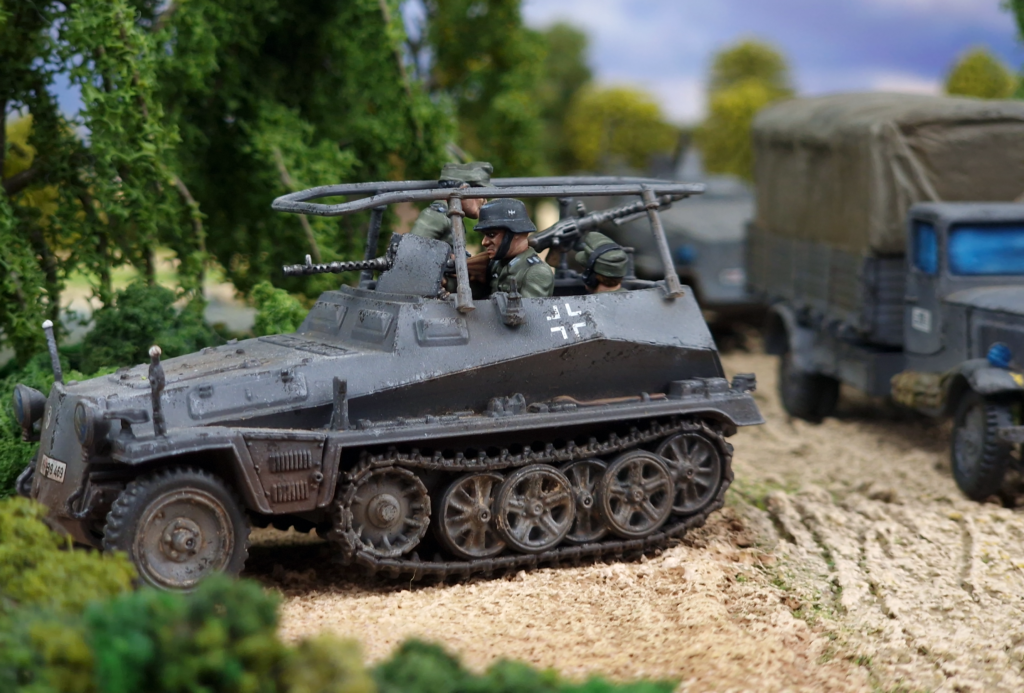
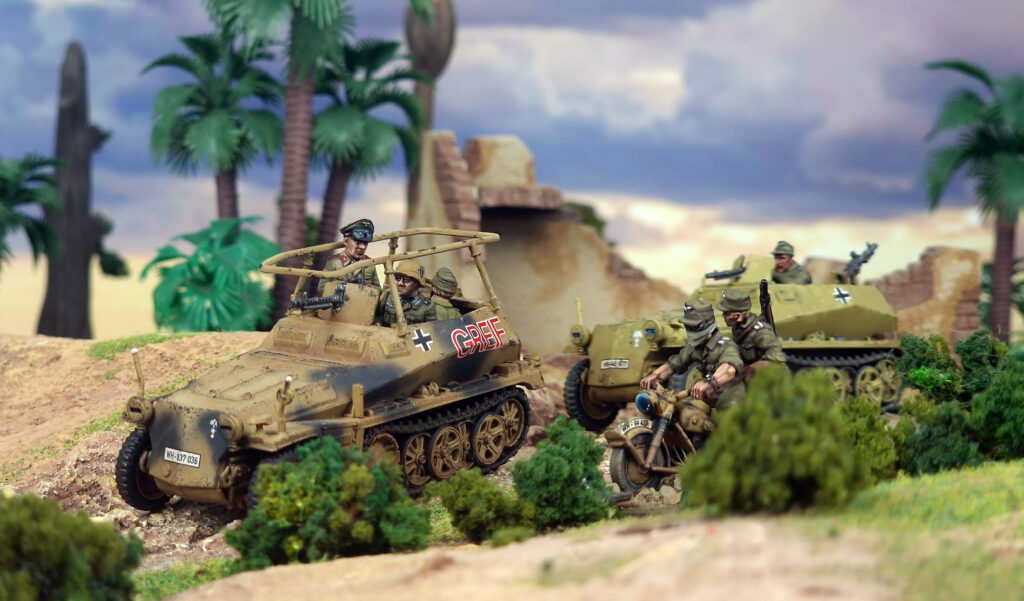
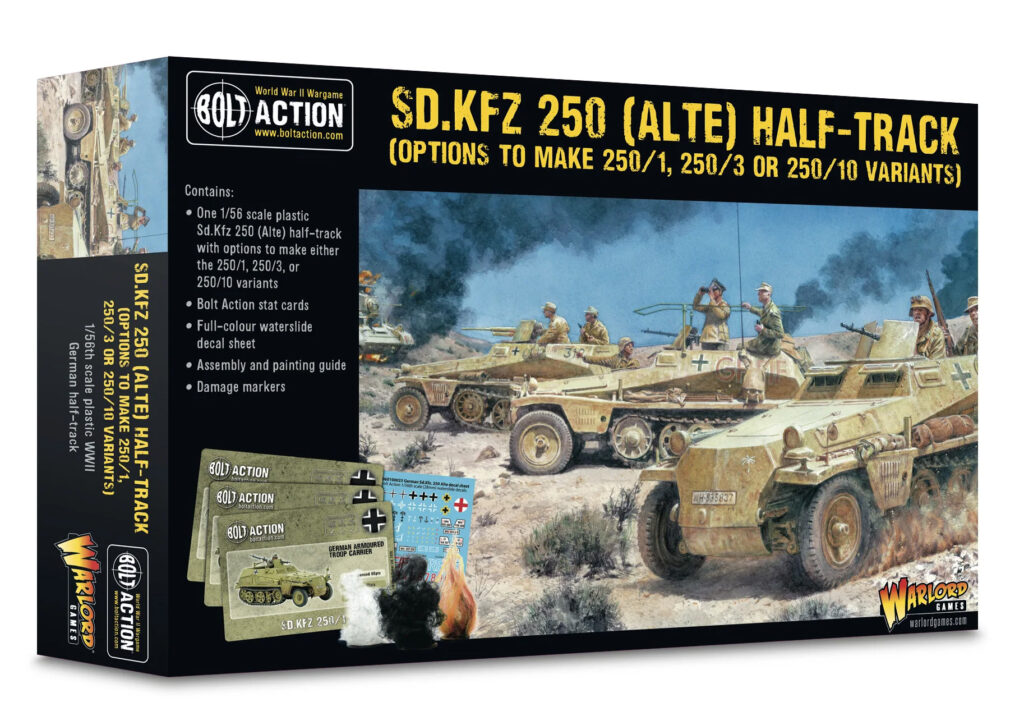
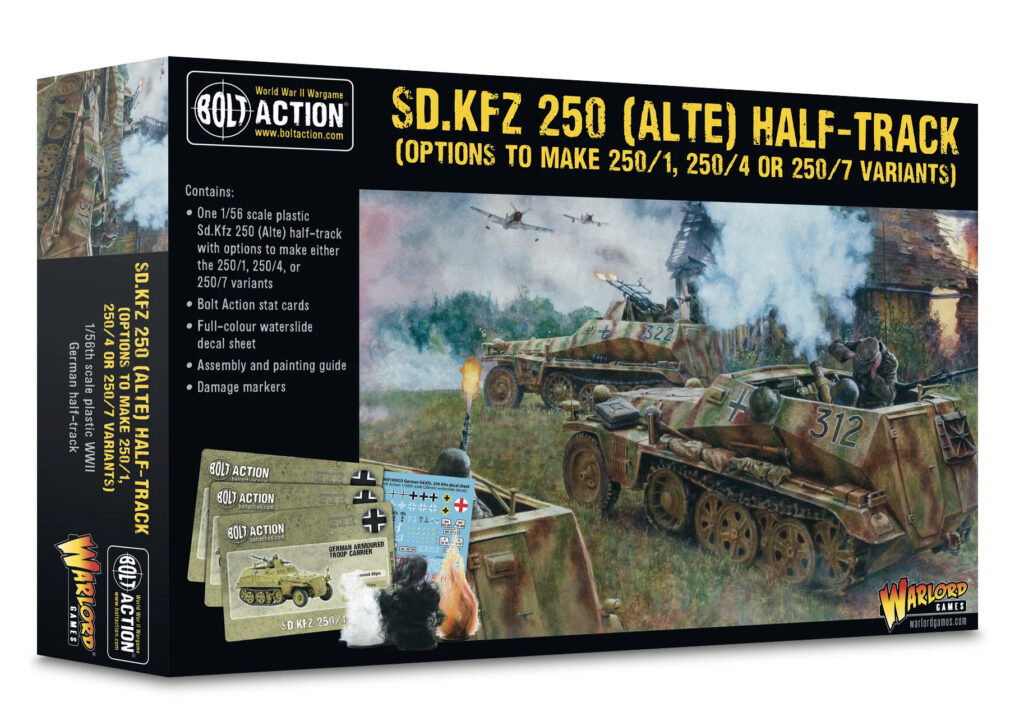
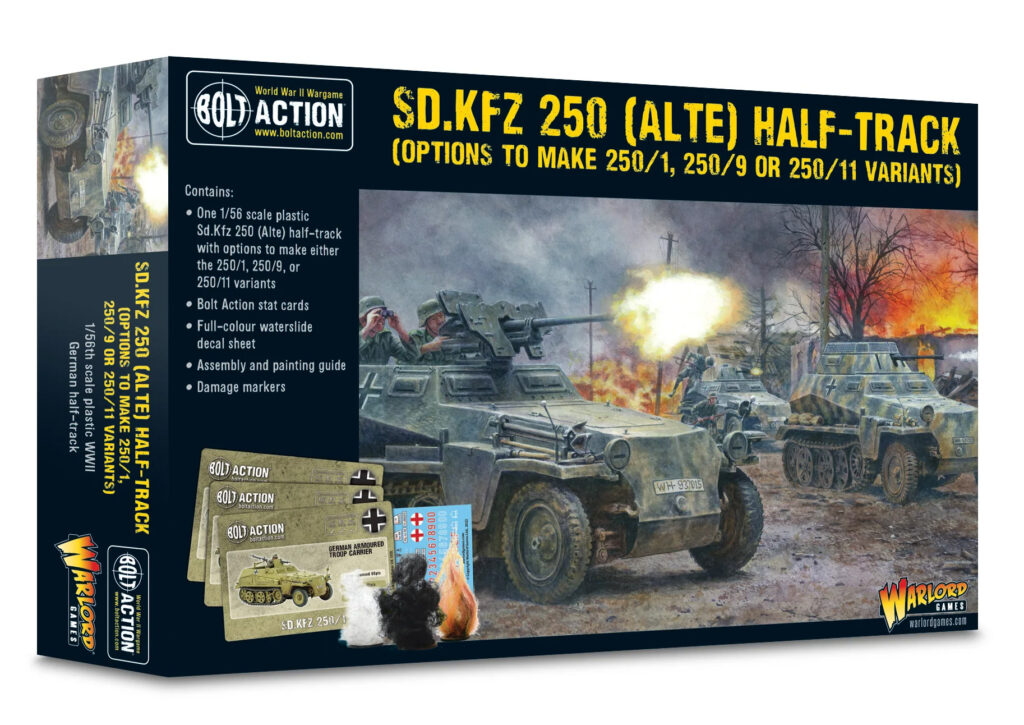
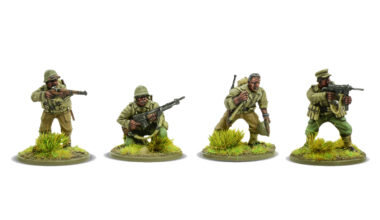
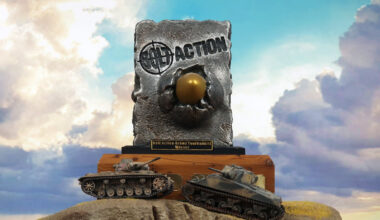
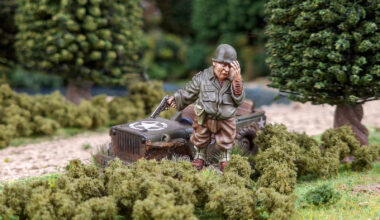
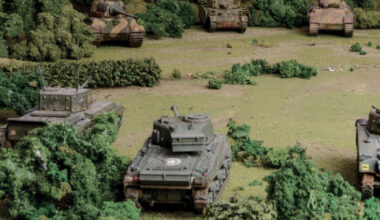
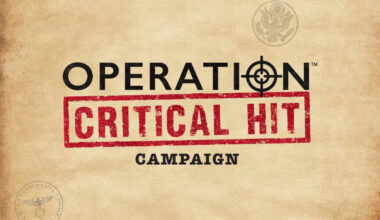
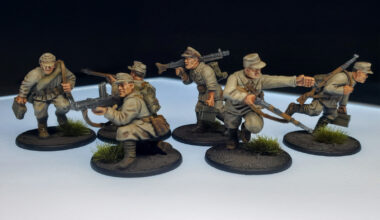
1 comment
One of the joys of playing the Germans is the variety of vehicles available. There’re something like two dozen+ versions of the 250 and 251 halftracks. I like the 250/4 for anti-infantry work. The 250/9 can be used in an armored car slot and is actually a little cheaper than the wheeled cars. The 28mm panzerbuchse on the 250/11 can take out medium tanks at close range….
Comments are closed.